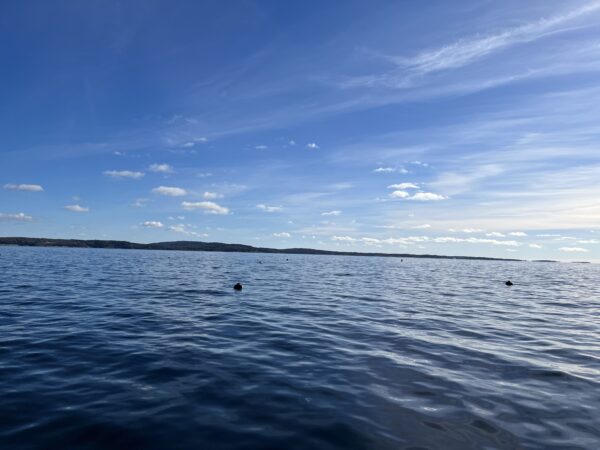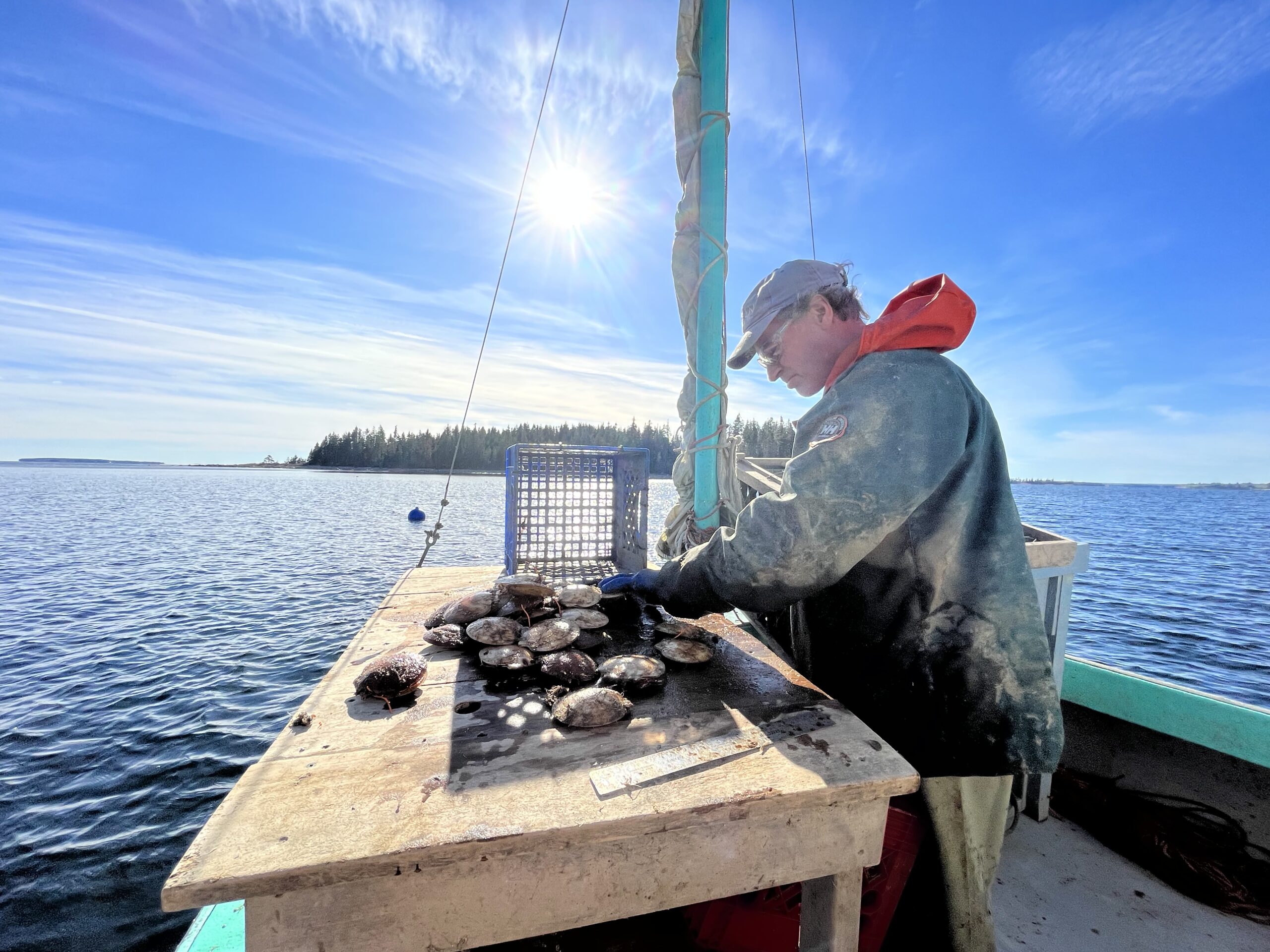Bay Tender Shellfish Ltd.
Welcome to Bay Tender Shellfish Ltd., led by Duncan Bates in the beautiful Chester Bay, Nova Scotia. Take an inside look into the innovative world of scallop farming under Duncan's stewardship.
by Laurie Starr
Last November, I had the pleasure of spending the day with Duncan Bates, the owner-operator of Bay Tender Shellfish, a scallop farm located in Chester Basin, NS. We spent the morning harvesting and cleaning live in-shell sea scallops, getting them ready for delivery the next day to our HQ in Bedford.
Duncan patiently talked me through the ins and outs of scallop farming, the challenges that face young up and coming farmers, and ultimately… how it’s all completely worth it.
Meeting Duncan Bates
Our day started out as a slightly windy, cold-but-sunny, clear November morning. As I awkwardly stood around not completely knowing what to do, Duncan prepared for the trip out to his lease opening up the boat, getting gas in the engine, and advising that it was time to don our ‘wet gear’. Duncan’s farm is about a half-hour ride out from the little harbour in Chester – where locals and tourists alike catch the Tancook Ferry. Not long after we moored up to the first line, the wind died off, and it became quiet and still. The sun was still packing its last vestige of summer heat, and it was truly one of the best ways I could imagine spending a Monday morning.
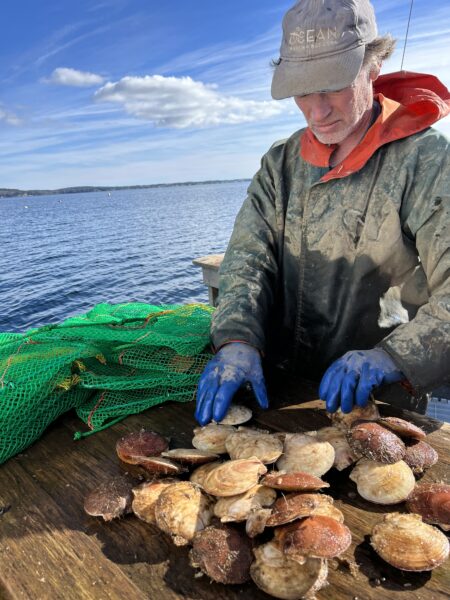 The Journey Begins
The Journey Begins
Duncan has been involved in the industry in some capacity for most of his life. From working on leases for summer jobs to eventually starting his own farm, the life of an aquaculturist is the dream for him. There was a brief hiatus in which he tried the daily grind of an office job, and the lifestyle did not align. Put simply, there’s no substitute for being on the water, in nature, every day.
Scallop Farming Techniques and Challenges
The scallops spend their first few seasons of growth in a pearl net – a pyramid shaped net used as a nursery for growing shellfish. Duncan’s scallops are grown out using what is called an “ear hanging” method. This is where the scallops are given a pin prick hole towards the back of their shell and a pin is used to attach the scallop directly to the line. While each farm is unique, Duncan can typically fit 80-100 scallops per line. When a line is full of scallops, it reminds me of some kind of undersea bunting. Duncan pulls the first line of scallops to the surface – they’re barely visible underneath the biofouling that plagues our waters. Seaweeds aside, the main culprit here are invasive tunicates also known as sea squirts. In the last decade, tunicate invasions have been the bane of many shellfish farmers’ existence; with most of the labour on a farm dedicated to scraping them off gear, moorings, lines, cages, product, you name it. Aside from smothering and inhibiting growth of the scallops, tunicate build up will also make the gear heavy, increasing stress on the lines, causing the farm to be more vulnerable to gear and product loss.
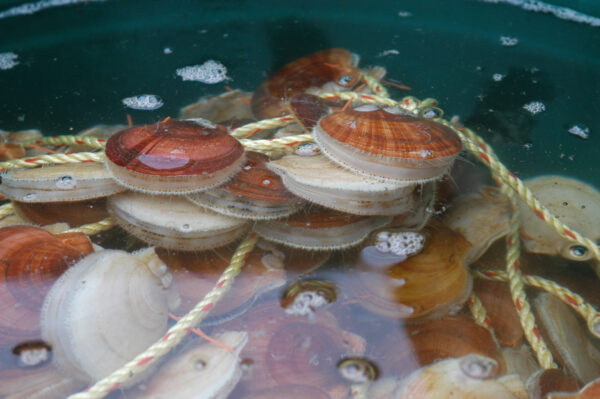
Right now, tunicates and other unwanted settlers on the scallop shells are scraped off manually, using a knife. The cleaned scallops are then graded out by size, and each size class is separated into bins. The bins get moored off overnight, for easy access the next morning when the scallops will be bagged and tagged. Most of the scallops are a “medium” – 9-10 cm in shell diameter – which took about 3 years of growth! Despite the cleaning being a laborious and slightly monotonous activity, the time moved quickly, and the calm day allowed us to chat more about the industry and its potential in Nova Scotia.
The Future of Scallop Farming
Scallop farming in Canada is highly underdeveloped, yet ripe with potential; there’s only a handful of farms, nationwide and kilometres of appropriate coastline. For those that are at the forefront of technology, automation, and growth we just need to look to countries like Japan. While this type of industry is possible here, the challenge facing most farmers is getting over the hump of the initial down payment. With zero chemical and feed inputs required and zero arable land needed to grow something that is essentially pure protein, shellfish aquaculture can be one of the answers to the local economy and food security questions we’ve been harbouring. Championing its success and supporting its growth is critical.
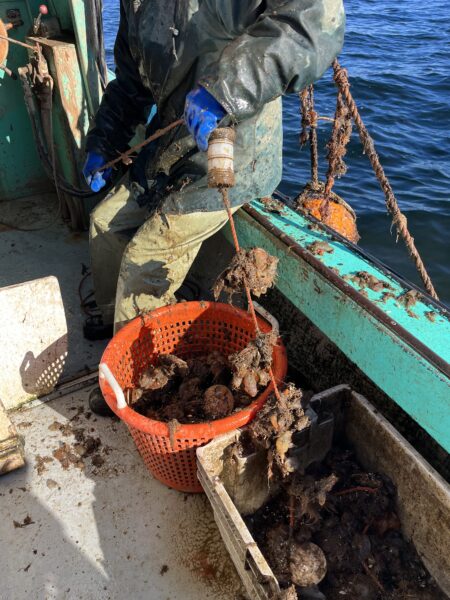
As I parted ways with Duncan for the day, I found myself daydreaming about the future of the industry. I pictured small, multi-species shellfish and seaweed farms, dotting the Atlantic coastline, staking ourselves at the forefront of a blue food, climate-friendly economy, growing and eating some of the most sustainable seafood on the planet. It’s a picture that brings me excitement, drive, and, dare I say, hope, for the future.
How to Get Your Hands on Cultivated Scallops
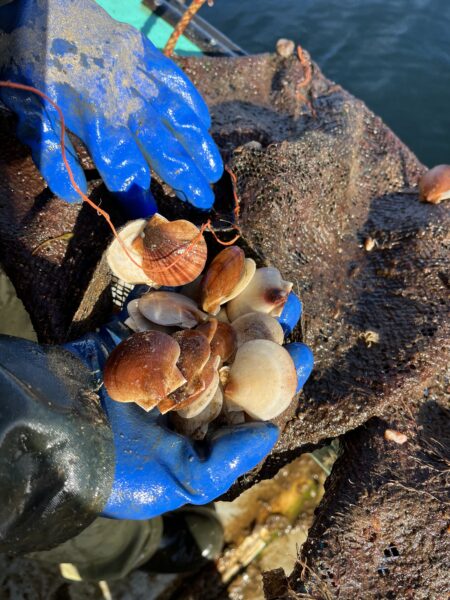 Alright – now that you’re hooked on cultivated scallops, you’re probably wondering how you can get your hands on some… We’re fortunate to work with several small-scale scallop farmers in Nova Scotia, and when weather allows, we bring in weekly orders. You can pre-order them in 10 count packs by Friday, with pick up on the following Tuesday or delivery Thursday. Order online HERE.
Alright – now that you’re hooked on cultivated scallops, you’re probably wondering how you can get your hands on some… We’re fortunate to work with several small-scale scallop farmers in Nova Scotia, and when weather allows, we bring in weekly orders. You can pre-order them in 10 count packs by Friday, with pick up on the following Tuesday or delivery Thursday. Order online HERE.
Since these are cultivated, you can eat them raw on the half shell (kind of like an oyster) or you can try out a couple of different recipes that we like. Check out these links:
- HOW TO SHUCK A SCALLOP
- RAW SCALLOP CRUDO ON THE HALF SHELL
- BROILED SCALLOP ON THE HALF SHELL
- BBQ SCALLOP
